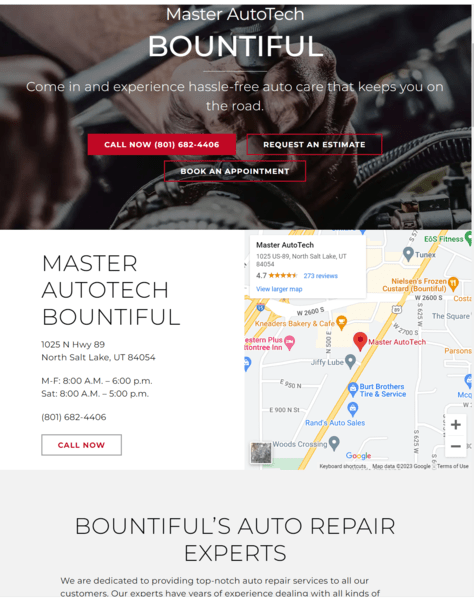
Local On-Page SEO is how we target the specific industry and location keywords that we want our site to rank for.
It is also how we tell the search engines who we are, where we are located, what industry we are in, and where off of our site the search engines should look for verification of all this information.
In this article, I am going to give you some of my best Local On-Page SEO tips to help you get your local business leading the Google Maps 3 Pack and outranking your competitors!
Before I get into the meat of this article, I have a quick suggestion. If you found this article because you are trying to learn Local Off-page SEO, I recommend you read my article “What Is On-Page Local SEO?“. Please see also my related article: “The Most Important Aspects of On-Page Local SEO!“.
Build Out Your Location Pages Correctly

Location pages are key to being relevant to your city and state in the eyes of search engines. If you don’t do a good job on your location pages, you will have a difficult time beating out your competition in Maps.
(Note: If you have a single location business, you would do everything I am going to talk about here on the home page, header, and footer of the website.)
1. The first thing you want to do is to list your business name, address, and phone number (NAP) exactly as you listed it everywhere else you put it on the internet. That is number one.
2. Next, include your GBP map embedded in the location page. Often, businesses mess up on this by just embedding a map to their business address.
But remember local SEO is all about associating your business to its address, and your GBP map does that. You can tell if it is your GBP map because it will say your business name by the pin rather than the address.
Besides embedding your GBP map on the page, I also like to turn the address into a link to the GBP map. I like to use both. Google Maps allows you both a short link or an iframe embed code.
3. Use the Web20Ranker.com Schema tool to create a Schema Markup and place it in the GBP map you embedded on the location page. Be sure and be thorough. Fill out everything they ask for when you are creating the schema code using their tool. Place links to your best business directory and social media profiles, including your GBP.
4. Geo-tag and optimize the images you include on your location pages. When search engines read a page, the images are just part of the HTML of the page that they read. When you geo-tag and optimize the images, the industry and location keywords and GPS coordinates you put into the data help tie your business to your industry and location.
5. Write 400 to 700 words of optimized content on your location page targeting your location and at least all your general industry keywords. Put your general keywords in your various headings and your supportive ones in the text below each heading.
Target Industry & Location Keywords Correctly

For my image in this section, I use the above example screenshot from the website of Rush Bail Bonds, an Alabama company.
As a local business owner, your website is still the main indicator for Google Maps and Google Search to know what search terms to show your business listing. Therefore, gauging your competition and optimizing your content is important.
1. Optimize Using Single Page For Low Competition
In low competative markets or industries, all of your keywords can be targeted on a single page using the URL, the title tag, the HTML title, the subtitles, and the text, with the most general terms in the URL, title tag, and HTML title, and then the more specific keywords in the subtitles and the supporting keywords in the text. (see “How To Optimize Content For Local SEO!“
2. Optimize Using 1 Page For Each General Service
For the average competition, it is stronger to write a whole page for each general product or service, such as “brake repair Austin, TX.” You use those keywords (switching things up each time) in the URL, title tag, and HTML tag.
“Then you put all of your supporting keywords for related services, such as “brake fluid flush” in your subtitles.
3. Optimize Using 1 Page For Each Supporting Keyword As Well
Under really competitive situations, you might need to dedicate an entire page per keyword, both general and supportive. If you do this, you will want to group them by each general keyword and their supporting keywords.
Then you want to interlink them using siloing, linking to each general page from the home page, then from each general page to one of their supporting pages, and each of the supporting pages linking to each other and back to the general page.
